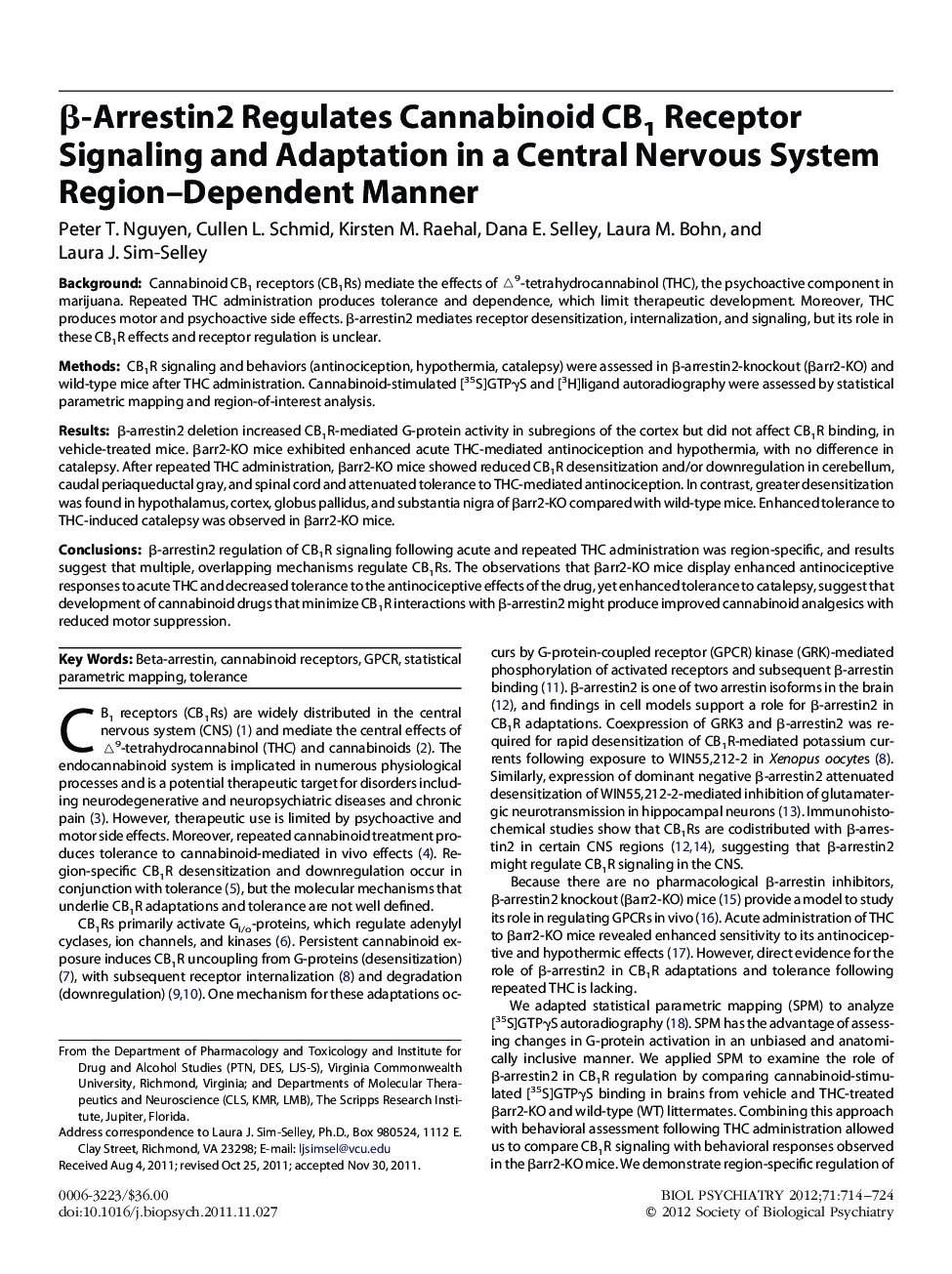| کد مقاله | کد نشریه | سال انتشار | مقاله انگلیسی | نسخه تمام متن |
|---|---|---|---|---|
| 4178036 | 1276468 | 2012 | 11 صفحه PDF | دانلود رایگان |

BackgroundCannabinoid CB1 receptors (CB1Rs) mediate the effects of ▵9-tetrahydrocannabinol (THC), the psychoactive component in marijuana. Repeated THC administration produces tolerance and dependence, which limit therapeutic development. Moreover, THC produces motor and psychoactive side effects. β-arrestin2 mediates receptor desensitization, internalization, and signaling, but its role in these CB1R effects and receptor regulation is unclear.MethodsCB1R signaling and behaviors (antinociception, hypothermia, catalepsy) were assessed in β-arrestin2-knockout (βarr2-KO) and wild-type mice after THC administration. Cannabinoid-stimulated [35S]GTPγS and [3H]ligand autoradiography were assessed by statistical parametric mapping and region-of-interest analysis.Resultsβ-arrestin2 deletion increased CB1R-mediated G-protein activity in subregions of the cortex but did not affect CB1R binding, in vehicle-treated mice. βarr2-KO mice exhibited enhanced acute THC-mediated antinociception and hypothermia, with no difference in catalepsy. After repeated THC administration, βarr2-KO mice showed reduced CB1R desensitization and/or downregulation in cerebellum, caudal periaqueductal gray, and spinal cord and attenuated tolerance to THC-mediated antinociception. In contrast, greater desensitization was found in hypothalamus, cortex, globus pallidus, and substantia nigra of βarr2-KO compared with wild-type mice. Enhanced tolerance to THC-induced catalepsy was observed in βarr2-KO mice.Conclusionsβ-arrestin2 regulation of CB1R signaling following acute and repeated THC administration was region-specific, and results suggest that multiple, overlapping mechanisms regulate CB1Rs. The observations that βarr2-KO mice display enhanced antinociceptive responses to acute THC and decreased tolerance to the antinociceptive effects of the drug, yet enhanced tolerance to catalepsy, suggest that development of cannabinoid drugs that minimize CB1R interactions with β-arrestin2 might produce improved cannabinoid analgesics with reduced motor suppression.
Journal: Biological Psychiatry - Volume 71, Issue 8, 15 April 2012, Pages 714–724